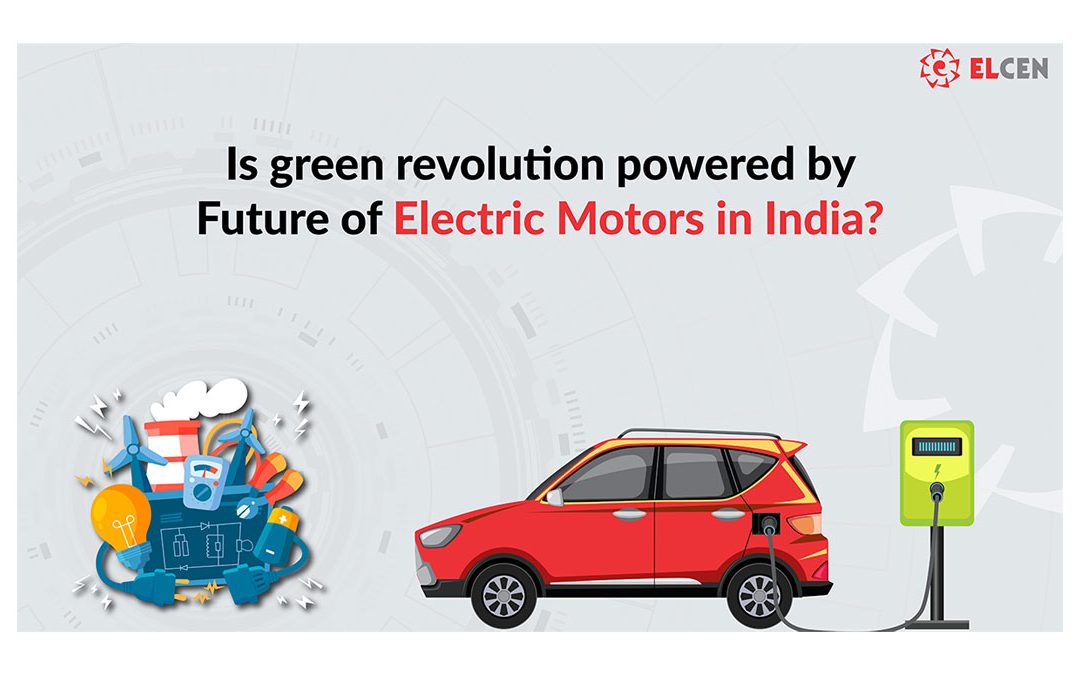The Indian electric motor market has reached a value of INR 118.30 billion in 2023.
This industry plays a very important role in the country’s industrial and manufacturing sectors, helping a range of applications across various industries.
India is a rapidly growing market for electric motors, and the major reasons for that are:
- Increasing industrialisation,
- Infrastructure development, and
- The government’s initiatives to promote energy efficiency and sustainability.
Our country has a well-established domestic electric motor manufacturing base that supplies both domestic and international markets.
The electric motor industry in India can be broadly classified into two segments:
1. Low-voltage motors
These motors are primarily employed in sectors like agriculture, construction, mining, and general industrial applications.
2. High-voltage motors
These motors are designed to handle high loads and operate under demanding conditions.
The Indian Government is also making constant efforts to promote both these segments.
EFFORTS BY THE INDIAN GOVERNMENT
One of the key reasons for the growth of the electric motor industry in India is the government’s focus on energy efficiency and sustainable development.
1. The Bureau of Energy Efficiency (BEE) has implemented various programmes and initiatives to promote the adoption of energy-efficient motors and drive systems.
These initiatives include the
- Star Labelling programme, which rates motors based on their energy efficiency, and
- The Perform, Achieve, and Trade (PAT) scheme, which incentivizes industries to improve their energy efficiency through various measures, including the use of energy-efficient motors.
2. The Indian government has introduced policies and regulations encouraging the use of energy-efficient equipment, including electric motors.
These measures have created a demand for high-efficiency motors, leading to increased investment and innovation in the electric motor industry.
3. There are more government projects, like the Green Energy Corridor in Gujarat, Maharashtra, and Madhya Pradesh, that are expected to boost the market.
The Indian electric motor industry is dominated by a few major players, including multinational corporations and domestic manufacturers.
Gujarat, Maharashtra, and Madhya Pradesh are the major markets for electric motors in the country. These states have played a big role in generating revenues in the market.
TRENDS IN THE INDUSTRY THAT WILL DEFINE THE FUTURE.
1. One of the significant trends in the Indian electric motor industry is the adoption of advanced technologies such as variable-speed drives (VFDs) and permanent magnet synchronous motors (PMSMs).
VFDs allow for precise control of motor speed and torque, leading to improved energy efficiency and reduced maintenance costs.
PMSMs, on the other hand, offer higher efficiency and a compact design, making them suitable for applications where space is a constraint.
2. Another trend is the increasing focus on the Internet of Things (IoT) and Industry 4.0 concepts.
Electric motor manufacturers are integrating smart sensors and communication technologies into their products, enabling remote monitoring, predictive maintenance, and optimised performance.
This trend is based on the growing demand for intelligent and connected systems in industrial applications.
3. The Indian electric motor industry is also seeing growth in the renewable energy sector, particularly in wind and solar power generation.
The increasing adoption of renewable energy sources has created a demand for specialised electric motors and generators designed for these applications.
CHALLENGES FACED BY THE INDIAN ELECTRIC MOTOR INDUSTRY
Despite its robust growth and potential, the Indian electric motor industry faces several challenges.
1. One of the major challenges is competition from low-cost imports, particularly from countries like China.
This has put pressure on domestic manufacturers to improve their cost competitiveness while maintaining quality standards.
2. Another challenge is the availability of skilled labour and technical expertise.
As the industry adopts advanced technologies and automation, there is a growing need for skilled professionals with expertise in areas such as motor design, control systems, and digital technologies.
Conclusion
We, as Elcen, are proud to contribute to this role and grow together with our country. We are happy to see the government’s focus on energy efficiency, sustainable development, and infrastructure growth, and we are pretty sure that the demand for electric motors is expected to continue rising.

